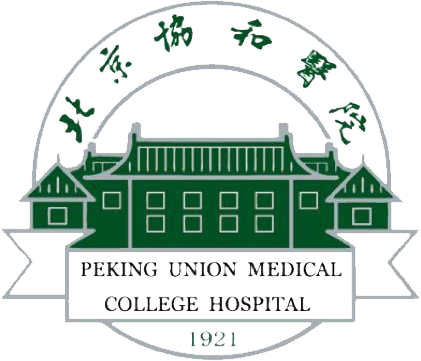On July 21, 2022, the National Health Commission and another 10 relevant authorities jointly issued the Guidance on Further Promoting the Integration of Medical and Elderly Care, drawing a roadmap for increasing service supply and removing barriers all around the country. PUMCH continues to improve its three-in-one model of “prevention, treatment and care” to meet the health service needs of the elderly and makes every effort to promote high-quality geriatrics development in the new era.
“Treasure box” needed for consultations
The Department of Geriatrics is like a “chat room” and also a special “interview”. Here, each doctor carries a “treasure box” containing everything they need, including grip strength instruments, questionnaires, assessment scales, and clock-drawing tests. Personalized assessments are made according to the conditions of each patient, requiring patient inquiry and careful observation.
The people-centered Department of Geriatrics also takes on the treatment of diseases of multi-specialties as well as the diagnosis, treatment and functional maintenance of geriatric syndromes. “Our goal is not simply to cure a disease, but to maintain the functional status of the elderly and improve their quality of life,” said Liu Xiaohong, Director of the Department of Geriatrics, who added that geriatrics should adopt the model of mobilizing the whole team and the whole community to provide whole-person care to the patient and help their whole family throughout the process.
The Department of Geriatrics is constantly seeking to outperform itself, from the initial general outpatient clinic and “one-stop” clinic for elderly and special needs patients, to the successively launched sarcopenia clinic, geriatric memory clinic, general geriatric clinic, hospice and palliative care clinic and geriatric multidisciplinary clinic, etc., and even the online assessment platform. Its efforts have benefited more and more people.
MDT works wonders
Kang Lin, deputy director of the Department of Geriatrics, said that in addition to the Department of Geriatrics, the geriatric MDT also includes the Department of Clinical Nutrition, Psychiatry, Pharmacy, Rehabilitation, Neurology, Traditional Chinese Medicine and Endocrinology, which team up to solve one geriatric challenge after another.
Every Friday morning, the geriatric MDT (including clinical pharmacists, clinical nutritionists, psychologists and rehabilitation physicians) conducts ward rounds, covering 6 to 10 cases each time. After evaluating and sorting out a patient’s case, physicians of the Department of Geriatrics identify and raise the issues, and then other MDT members discuss them and make an intervention plan, followed by regular evaluation. The MDT also conducts teaching-oriented ward rounds that other medical institutions and elderly care institutes participate in remotely, benefiting more parts of the country with the PUMCH experience.
Care for the elderly like family
On average, PUMCH records 400 consultations for treating chronic wounds, 250 sessions of providing hospice and palliative care, 700 peritoneal dialyses, 1,000 PICC placements and 10,000 maintenance visits per year for elderly patients. The hospital has established 2 specialized nursing teams for geriatric care and hospice care and trained a number of specialized nurses and backbone personnel, providing quality services offline and online for elderly patients. To make eating safer for hospitalized elderly patients, the hospital has also established a localized and standardized diet texture adjustment program and formed a safe eating management process for elderly patients with dysphagia. To improve the quality of life of elderly patients at the end of life, the hospital takes care to give them psychological support and humanistic care, and continues to explore hospice and palliative practice programs within the tertiary general hospital system.
Innovative integration of medical and elderly care
Due to recurrent epidemic outbreaks and his increasing frailty, an 87-year-old man who was once hospitalized at PUMCH had difficulty accessing medical care, including routine treatment, care and follow-up visits. In response to these issues, the Department of Geriatrics carefully reviewed the patient’s case, assessed his health status by telemedical service, and developed a plan for continuous coordination care by those inside and outside the hospital: PUMCH works with a third-party care provider and provides remote guidance for its community staff to meet his multiple needs for home treatment and care. Under this model, an integrated care manager with a professional medical background can track the health status of the elderly and provide timely interventions to reduce potential health risks and improve their quality of life. This model is like a special “relay race”, and the baton that symbolizes elderly patients’ health is passed on from hospital to family, but compassion remains uninterrupted and uncompromised.
Guide the elderly to adopt a healthy lifestyle
In 2019, the Healthy China initiative kicked off. Strongly advocating for science and academic research to play a leading role in health promotion efforts, PUMCH established a medical science popularization committee and a science popularization expert pool, and took the lead in establishing a medical science popularization system. During the Elderly Health Promotion Week, PUMCH’s series of science popularization activities recorded over 5 million attendances. PUMCH publishes more than 10 popular science popularization books and manuals for the elderly every year. PUMCH also continues to conduct consultations for patients and host science popularization lectures for free and guides the elderly towards a healthy lifestyle. Other examples abound. In a nutshell, PUMCH has become an advocate of health concepts, a disseminator of health knowledge, and a promoter of healthful behavior.

The geriatric MDT was conducting a ward round
Reporter: Wang Jingxia and Wang Lu
Picture courtesy: Wang Jingxia
Translator: Liu Haiyan
Editor: Kang Lin and Wang Yao
